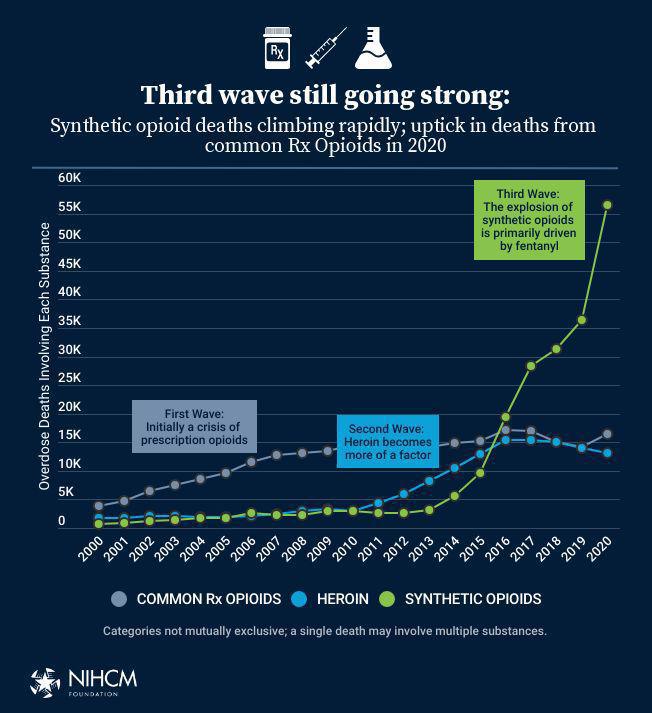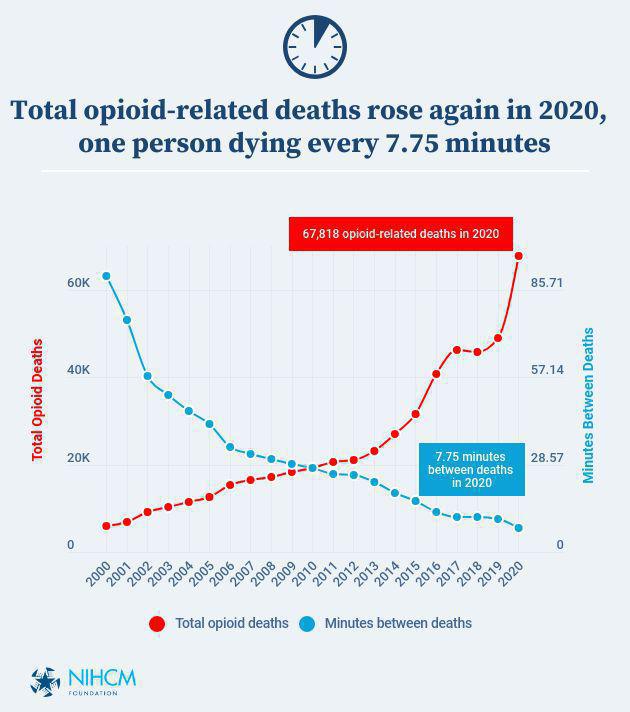Published on: July 21, 2022. Updated on: July 28, 2022.
Although final death statistics are currently available from the Centers for Disease Control and Prevention (CDC), only through 2020, provisional data also compiled by the CDC show a rise in opioid deaths when COVID-19 lockdowns began in March 2020. The rise is particularly notable for deaths involving synthetic opioids. Factors related to the pandemic, such as stress, social isolation, and using these substances alone, likely exacerbated the increase in overdose deaths. Additionally, lockdowns made it challenging for people to receive in-person treatment for existing substance abuse problems, harm reduction services, and emergency services.
Over this period, the crisis evolved in three well-documented waves. Initially, overdose deaths were predominantly linked to common prescription opioids. Despite a recent decline in deaths involving prescription opioids, there was an uptick in 2020. Heroin was increasingly involved in overdose deaths since 2011 but began declining in 2016. Beginning in 2014, there was an explosion in the number of deaths involving synthetic opioids such as fentanyl. The source of fentanyl driving the increase in synthetic opioid-involved deaths is more likely to be illicitly manufactured than pharmaceutical. Because a single death may involve multiple types of opioids, summing across the three categories in any year will overstate the total number of
deaths in that year.
Since 2000, there has been a more than 1,000% increase in opioid overdose deaths. As the rate of deaths grew, the minutes between deaths fell correspondingly. By 2020, one person was dying of an opioid overdose every 7.75 minutes. Nearly 75% of drug overdose deaths in 2020 involved an opioid.
Strategies to reduce drug overdose deaths include promoting evidence-based solutions in prevention, harm reduction, treatment and recovery efforts. Additionally, efforts are needed to improve data collection. This includes the collection of timely and local data, making real-time data available for analysis, and using gathered information to inform community-tailored interventions.





